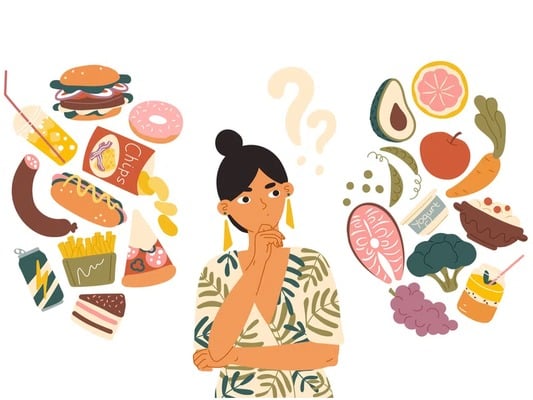
Chances are if you’ve read a blog, scrolled social media or opened a magazine recently, you’ve encountered a recipe. Whether it’s a TikTok trending dish or a new diet fad, food content and recipes are everywhere. Recipes are a pillar of the $1.5 million (and growing) health and wellness market, and nearly 80% of consumers believe wellness is important, according to research by McKinsey.
Because what we eat is inextricably tied to our health, as a health care content marketer you can easily leverage the recipe trend to meet your marketing goals.
Recipe content is directly connected to many of the most prevalent health issues in our country today. Obesity is an epidemic in the United States that affects over 40% of adults and almost 20% of children, according to the National Institutes of Health.
Additionally, research done by the George Washington University School of Medicine & Health Sciences in 2020 showed that our fast-paced culture and propensity for highly processed, low-nutrition food is a huge factor in exacerbating the obesity epidemic. The author of the research explained that to properly fight this trend, “we need to include efforts to use food as medicine.”
Recipes can be a great addition to materials you already create for patients managing chronic illness. Lifestyle change is often one of the biggest hurdles to managing diseases like diabetes, so you can use recipes as a gateway to services like nutritional counseling and exercise classes. Consider stocking your endocrinology department’s reception area with sugar-free recipes to satisfy a sweet tooth or low-sodium recipes for dinner. And encourage providers to offer recipes to patients. You can also deliver weekly or monthly recipes via email to patients based on their dietary needs.
Home-cooked meals using whole foods are almost always healthier than takeout or processed, pre-made products, and the data shows that most consumers want to involve more cooking in their lives. A 2020 survey by Report Linker examined Americans’ cooking habits and made some interesting findings, including that for the overwhelming majority of Americans (98%), cooking at home is the preferred way to prepare a meal, and about 50% say they cook three to six days per week. Among the respondents, almost a quarter said their main reason for cooking at home was because it was healthier.
Additionally, 17% of all respondents (and 32% of millennials) said they mainly find inspiration for cooking on websites or blogs. Overall, about 33% of people surveyed use some kind of media to find cooking ideas, whether it be a website, blog, magazine or television show.
Your social channels are a great platform for recipe content. You can share quick tutorial videos that link to your website for full recipe details. If you print a community newsletter, include a recipe that makes use of produce that is in season. On your blog, you can tag your recipes by ingredient, so consumers can find a recipe that works for what’s already in their refrigerator or pantry.
It’s clear that healthy cooking is a big interest for many consumers, and it has a strong tie to health care marketing goals: informing consumers about healthy choices and developing a reputation as a resource for useful, life-enhancing information.
Recipes are a great way to naturally take advantage of this interest. Consider heart-healthy recipes for American Heart Month, or fun and healthy ideas for a picnic spread in the summertime. Not only are recipes interesting content, but large, colorful photos of delicious food are always eye-catching. The opportunities for connecting recipes to the content themes you already work with are endless.
Looking for inspiration? Learn more about GLC’s Well-Fed Me library of recipe and health and wellness content.
Andrew Conner
The original version of this page was published at: https://glcdelivers.com/why-recipes-are-the-secret-ingredient-in-your-content-marketing/
GLC is a full-service agency that helps healthcare brands build relationships with their audiences. GLC crafts content marketing campaigns for every medium—whether it be digital, social, video, or ... Read more
Healthcare workers were in high demand before the pandemic. But as nurses, allied health workers and hospital workers exit the field due to a variety of COVID-related stresses, healthcare ...read more
Change can breathe new life into your organization, raising morale for staff and members alike. One change you can make is rebranding your organization to meet the evolving needs of ...read more
Everywhere you look, new options for telehealth are popping up. From local primary care offices to global apps, accessing medical services over the internet is becoming more and more ...read more
Health observances are a perfect opportunity to use content marketing to raise awareness about your organization, providers, services and specialties. But coming up with interesting ...read more